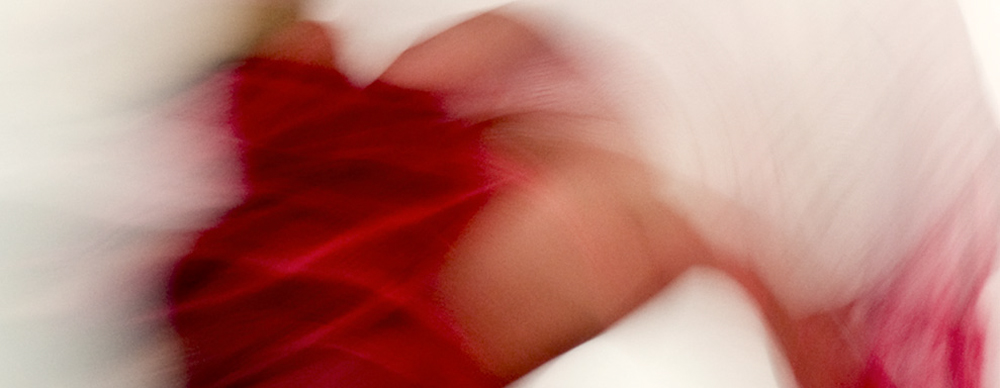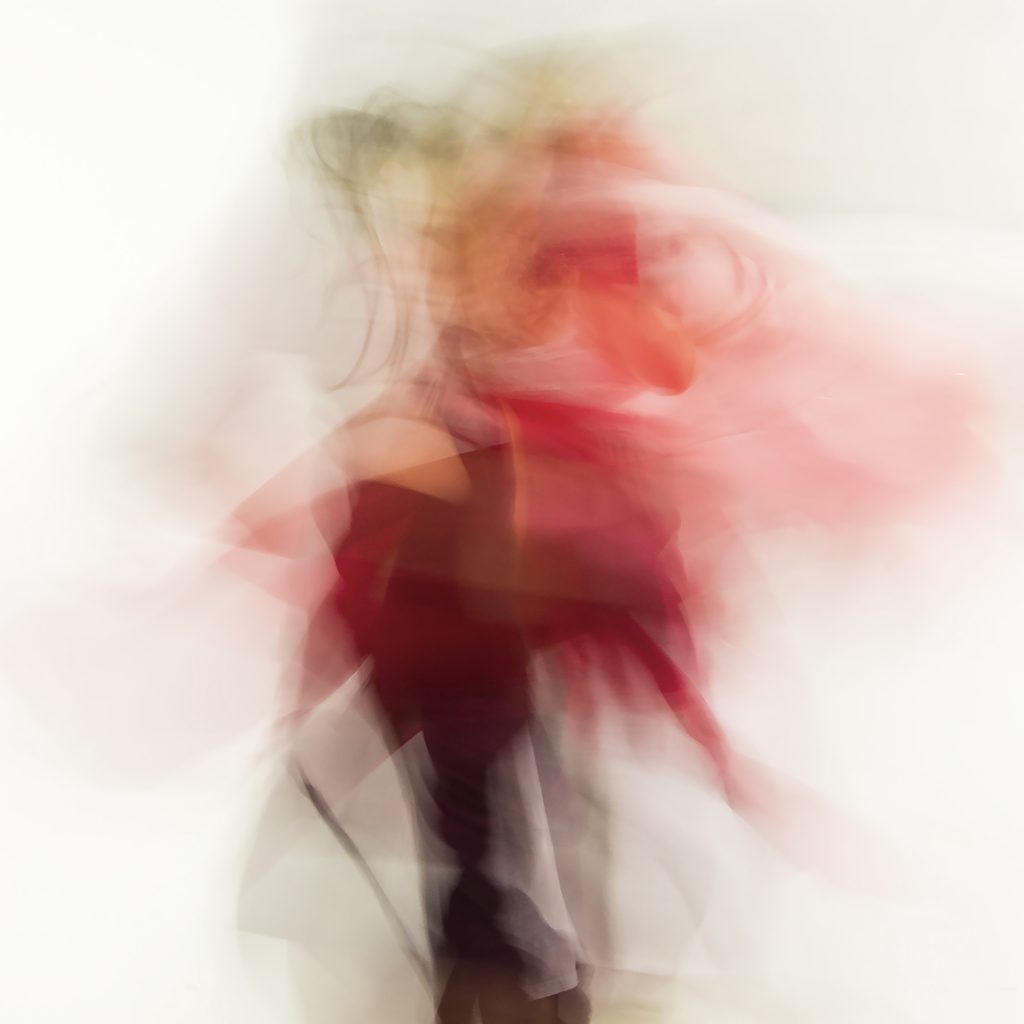Grace Ko

What kind of language is art? Every time I read the gatha in Diamond Sutra, “Thus shall you think of this fleeting world: a star at dawn, a bubble in a stream; a flash of lightning in a summer cloud; a flickering lamp, a phantom, and a dream,” I think of Dutch artist Simone Boon’s photography. Her unearthly images seem to visually express this gatha.
Viewing art is like opening up another sensory channel that hones an artist’s view of the world. Everyone’s sensory channel and how we interpret the world is different. A few years ago, when I saw Boon’s first series of photographic stills. I found the work stunning, but also eerie. The figures in these photographs of females who move into the abstract blurs look like spirits.
For Boon, she was trying to explore other types of photography to present the idea that, “form is only a snapshot view of transition,” — a statement from French philosopher’s Henri Bergson. Her aim is to capture human essence that forms in relation to patterns in a flow of becoming. The flowing essence of humans can be attuned to the changing rhythms of reality. It is not in the everyday images we see.
We can’t really have solid form in the face of change. Change is inevitable. It is the part of the universe. Boon took photographic shots of a young female who moved into blurring moving spirits. It is a good presentation of something that is at once formless but visible. Maybe it is a snapshot of how we really are, formless but still present. She said her photography is also inspired by Greek philosopher Heraclitus’s words: “No man ever steps in the same river twice, for it’s not the same river and he’s not the same man.”

Synonymous with Heraclitus’ idea of change are the following verses from the Diamond Sutra, here translated by Vietnamese Buddhist monk Thich Nhat Hanh, who also told us that there is no such thing as form:
“Someone who looks for me in form
or seeks me in sound
is on a mistaken path
and cannot see the Tathagata.”
“All composed things are like a dream,
a phantom, a drop of dew, a flash of lightning.
That is how to meditate on them.
That is how to observe them.”
When I first looked at Boon’s photography, I saw figures that looked spiritual rather than solid and human. Boon once told me that her photography models are beautiful young females. Isn’t it ironic that they are models that we aspire to in life? No matter how beautiful and young one is, after a few decades, one will just end up in a flow of change, different to the original form but with the same essence.
Buddhist-influenced pop icon David Bowie once said, “If we move one grain of sand, the earth is no longer exactly the same.” Buddhist teachings, artists, philosophers, and pop singers are all tuned into the nature of impermanence. But how do we accept change? It depends on the effort of individuals. Thich Nhat Hanh said, “That is how to meditate on them. That is how to observe them.” Through understanding and meditation.
